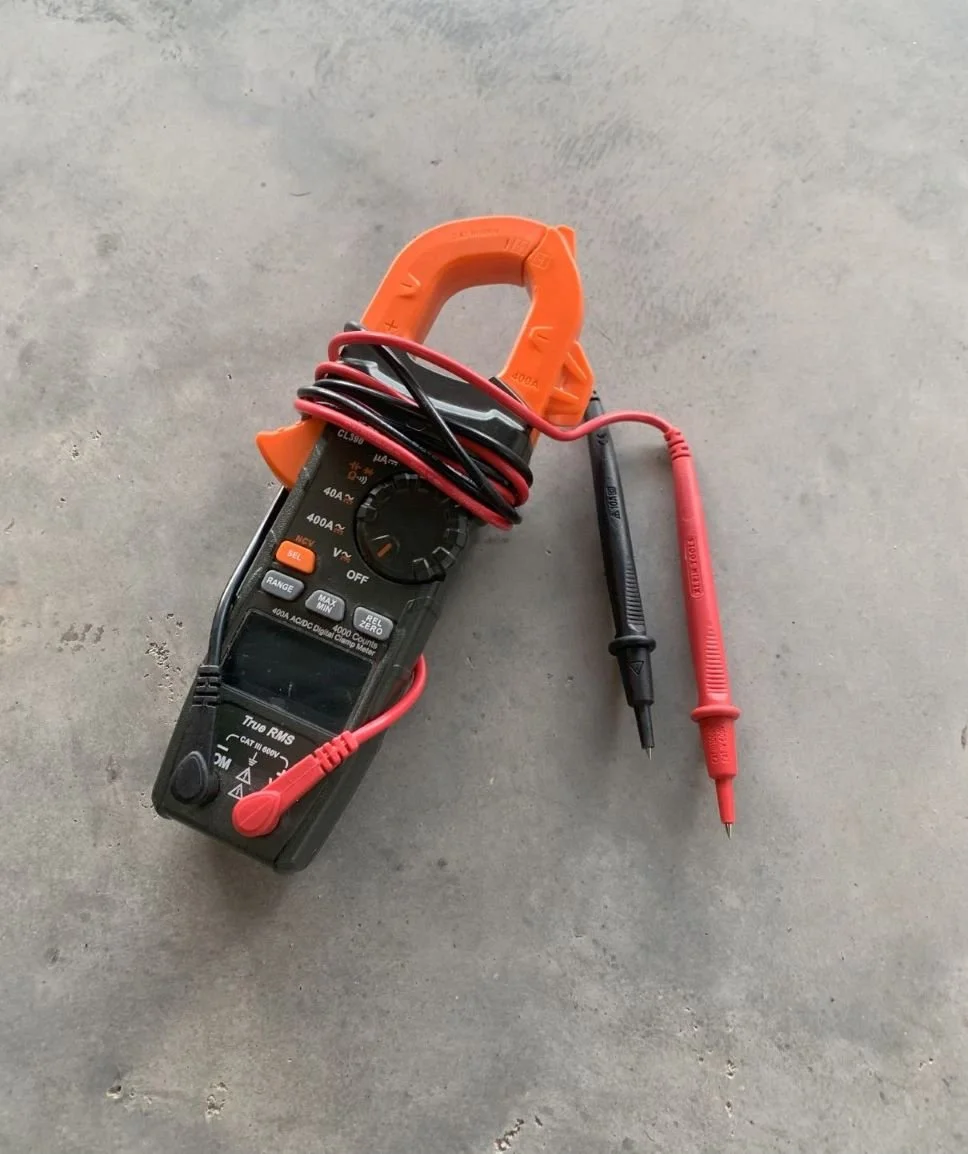Easy Overview of the Multimeter [Homeowner Toolkit]
In this article, I’ll demystify a tool that has been around and a staple in any handyman’s tool box for many years. The Multi-meter can be a bit intimidating, but it is a tool every homeowner should have on hand and have basic knowledge of how to use. The multimeter can be used to save tons of time and money troubleshooting issues around the house.
My first job was as a low-voltage installer, I’m very comfortable with running wire and installing boxes. This gave me the groundwork to move into electrical work on my own homes. I’ve done many projects over the years, including adding outlets, changing out lights, adding light switches and lights. During a large home addition I installed new main service and two sub-panels. I’ve done quite a bit and it’s all passed inspection under a permit! Always check your local authority having jurisdiction (AHJ), here in Minnesota the homeowner is able to do improvements with a permit and inspection by the state.
Beginning in low-voltage work gave me good background on testing speaker runs for voltage and continuity. Then throughout the years I’ve learned a lot about residential electrical, specifically confirming voltage and reading current readings. I’ll also share what I’ve found and what I use now for all the different types of projects. It’s not always what is the best multi-meter, but having multiple?
Multimeter
Example Multimeter with test leads and current clamp. This is my newest one.
Does a homeowner need a multimeter?
I’ll first answer the question: Does a homeowner need a multimeter? Yes! Every homeowner should own a multimeter just as another basic hand tool in the house. Once you understand the basics from this article below this will be a very handy and simple tool that can be inexpensive. Multimeters can be used for home, auto, and marine troubleshooting. It is a simple way to narrow down if you’re in need of an appliance specialist or electrician when things go out. For more detailed troubleshooting it is easy to narrow down what component is failed rather than “buy and try” (I’ve done that still).
Key features of a multimeter:
Without getting deep into the technical working of a multimeter, I’ll cover the key features I use on the multimeter. These three (3) key features of a multimeter are the reason we should all have one.
Voltage
Continuity
Current
1) Read Voltage - Using the test leads on two wires will show if there is voltage (or pressure) on those wires, meaning that some power is being sent down those wires. I mostly use this setting in DC mode where I’m trying to fix the many things around the house that are all now “smart” but have too many electronics in them now.
Example usages: I’ve used the voltage setting to check that kids Peg Pergo tractor batteries, auto sensors, appliance parts, batteries, and home electrical.
2) Check Continuity - This tests if the wires or sensor your testing completes the circuit or not. By selecting the speaker symbol the multimeter will beep if the signal passes all the way though or stay silent if there is no connection.
Example usage: I’ve used this to troubleshoot a failed local disconnect breaker on our AC unit. Started by testing for voltage each side - found the breaker wasn’t passing power and validated it was L2 not getting power even while on (video below coming). I’ve also been able to test magnetic switches, door switches, and other simple sensors while working on appliances.
3) Measure Current - Measuring current is a slight bit more advanced, but nothing to difficult. Selecting the amp reading setting (A) and clamping the jaw around a single hot wire will show how much energy is flowing through that wire.
Example usage: This was helpful as I was upgrading my panel, I was able to measure the current on different existing circuits and try to balance them across each leg (black and red).
Best multimeter for home use:
This list will cover the top three (3) multimeters for home use, all of which I have owned and used for years. They each have their own purpose. I’ll list them in order of when I purchased them and give some background on each.
Basic - everyone should own!
The first is the most basic and also the most cost effective. This was one I had from my low voltage days and it was just the cheapest one on the shelf. It still works to this day and is in my truck repair bag that I travel with. The link below isn’t the exact same but similar. I’m always amazed that after over a year of sitting in the truck it still turns on and works.
This provides all the basic testing needs and proper leads. It gives clear selection for AC or DC measurements and a nice simple to understand screen.
Better -
This was the first higher quality multimeter I purchased, for some reason as I got more into home electrical I felt the smaller cheaper one wouldn’t hold up. That isn’t the case at all, but it was what I told myself to buy a nicer setup.
The Kline Multimeter was on sale at Home Depot when I purchased it. I liked that it had a kick stand and nice long leads on the probes. It also had a few more settings and higher ratings than my original.
Fancy -
Now to my favorite and most recent purchase. This Kline digital clamp meter has all the same readings / features as the previous Kline meter, but with the added Clamp for measuring current/amperage through a circuit easily.
OEM Replacement Leads - These accessories give you more options of how to measure based on the situation.
